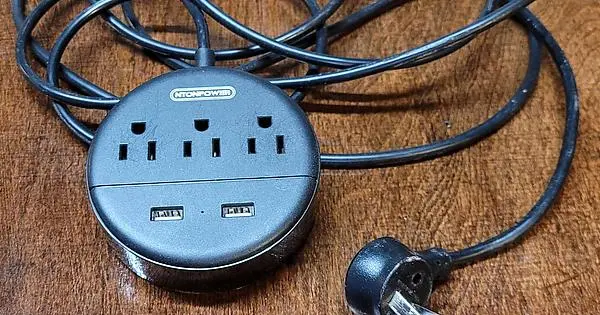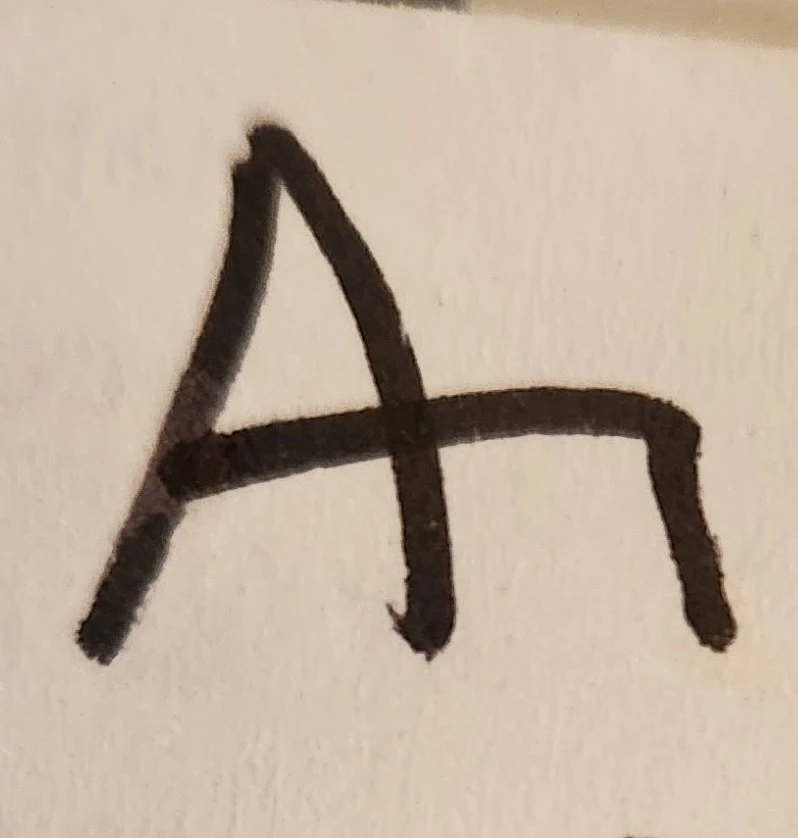This is a quick one, not an impressive repair, but maybe a nice demonstration of the perks of keeping stuff until its useful. I found a multi-socket extension cord/usb charger while digging through ewaste (I fix up laptops and give the stuff I find away on my local.Buy Nothing -type group).
Someone had really yanked on it (probably the plug was stuck behind something heavy) and when it came free, two of the prongs were bent, and the ground prong was ripped out altogether.
I had a spare 120v plug - about a year ago, I took some old extension cords from an estate cleanout. Awhile later, while helping a friend build an arcade cabinet, I dug one out and cut the socket off it to wire the cabinet up for electricity. Unfortunately, the sheathing around the individual wires inside the cord had crumbled away to almost nothing, and it wasn’t safe to use. I gave the copper to a friend who sells metal to a junkyard, and kept the plugs from either end.
The actual rewiring isn’t difficult, just stripped the wires and attached them to the correct terminals. I used an old neon tester my neighbor gave me to check my work. It lit up just fine and I didn’t trip the circuit. Later I plugged a bricked, ewaste 1st gen ipad into the usb socket and it started charging just fine. So it looks like this worked out
So there’s my excuse for why I keep all these odds and ends.Even when it’s something as simple as this, there’s something wonderful about being able to take multiple pieces of junk, combining them, and suddenly having a useful item.
Hell yeah.
It’s a lot more frustrating if they make it impossible to fix but it is damn satisfying when you’ve prevented something from going to the trash.
I’ve also used this sort of work to create a spliced power cord for a two monitor setup but I could only spare one plug.
PSA:
Safety switches / circuit breakers only protect the wiring inside the walls
They don’t do anything for extension cords and power boards so don’t overload them otherwise you will risk a house fire
Yeah I generally don’t love these extension cord / splitter combination because they make it too easy to casually plug in lots of stuff. I’ve been using this one but just for a box fan (old building, retrofitted for electricity with the absolute minimum number of outlets). When I do hook multiple things to one extension cord, I make sure it’s something like power tools, where I know I can only use one at a time anyways, and that I’ll always be there when its in use. I also check my cords for heat when they’ve been in use for awhile (I once found a daisy chained set of rack-mount power strips in a server room, where one of the plugs had melted to the socket it was plugged into, fusing them together. Pulling them apart broke the plastic outlet. I’ve been a little cautious ever since).
Enjoy your electrical fire
TBH this is some really basic wiring stuff. You identify three differently colored wires, match them to three terminals, and tighten three screws. The same attachment system is in every outlet and light switch in your house.
It used to be common (in the UK) for all appliances to come without plugs. Wiring a plug, and choosing the correct fuse value were basic life skills.
It’s a fairly basic task. I’ve had to do this exact fix multiple times (I might abuse extension leads a bit).
I mean, it used to be common to plug appliances to the light bulb sockets haphazardly. But then we realized that’s not safe.
My company does yearly audits to our electronics and quarantines lots of them from being unsafe for different reasons. It might sound like a fairly basic task, but most people overestimate their skill, and there’s more to electricity than connecting two wires.
Wiring a plug is almost that simple. 3 wires connected to the proper terminals, and the external insulation properly strain relieved. Make sure the correct value fuse is used, and close it up.
The equivalent of your checks are PAT testing (Portable Appliance Testing… testing). It also includes a few things like earth bonding, and inverted connections. But even that doesn’t require a train electrician, just a “competent individual”.
It might just be that UK plugs are particularly well designed to be wired up by the end user. I’ve also taught plenty of people how to do it safely, over the years.





